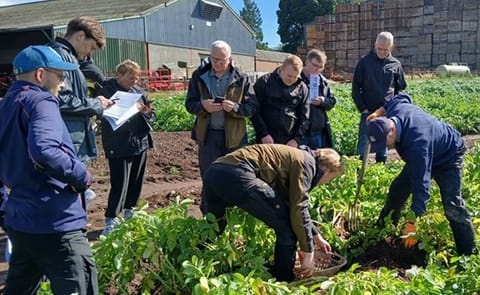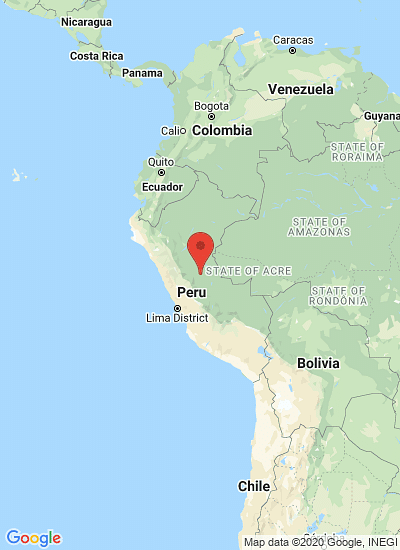David Tay heaves aside a metal door that leads into an earthquake-proof room chilled to 42 degrees.
There, under the glow of blue-tinged lights, are thousands of test tubes, each with small green sprouts trapped inside.
This room is the heart of the International Potato Center and home to more than 7,000 varieties of spuds.
For the past 40 years, the center, known by its Spanish acronym of CIP, has scoured the globe to build the world's most complete collection of potatoes. In the process it has become a genetic Noah's Ark, safeguarding tuber varieties in the face of manmade and natural disasters.
"I think somebody has to do it,"said Tay, the head of the CIP's genetic resources and conservation division. "And the whole idea is that we carry this social responsibility to humankind so that we can face the future."
Along with the in-vitro gene bank the CIP is keeping root tips in cryopreservation - frozen in liquid nitrogen - at minus 321 degrees Fahrenheit, and has potatoes under guard at the fortified "Doomsday Seed Vault"in Spitsbergen, Norway.
In addition, it has sent samples to more than 100 countries and offers Andean farmers disease-free local varieties to keep them alive in the wild.
The obsession with preserving obscure potatoes may seem odd in the United States, where most people are only familiar with russets, fingerlings, yellow, red and white potatoes.
But Tay is fond of reminding visitors that potatoes are not from Idaho, but from the Andes.
"These are the great-grandparents of all the potatoes in the world,"he said, waving an arm at the gleaming test-tubes. And there's no way of telling which one of the 7,000 varieties may have "the winning gene"that could make it the ideal crop for a changing planet.
- Noticias
- Cadena de Suministro de Papas
- The potato preserve...
The potato preserve
Iniciar sesión or Registro to use this flag.

Junio 26, 2011
Fuente
¿Te gustaría recibir noticias como esta por correo electrónico? ¡Únete y suscríbete!
Get the latest potato industry news straight to your WhatsApp. Join the PotatoPro WhatsApp Community!
Temas relacionados:
Empresa Destacada
Related News

Diciembre 11, 2025
Global Potato Summit 2025 Opens in Greater Noida: Global Experts, Cutting-Edge Research and India’s Leadership Take Center Stage
Global Potato Summit 2025 opened at IEML, Greater Noida, uniting global experts, policymakers and industry leaders. The event highlighted India’s growing leadership in potato innovation, sustainability, processing, exports and value-chain growth.
Diciembre 10, 2025
M S International Powers India’s Farm-to-World Potato Leadership at the Global Potato Summit 2025
M S International joins the Global Potato Summit 2025 as a Bronze Sponsor, highlighting export strength, infrastructure, and its farm-to-world model. MSI leaders will join panels and partnerships to strengthen India’s global potato role.
Diciembre 06, 2025
Dundee to Host SACAPP 2026 Conference Showcasing Innovation and the Future of Potato Farming
SACAPP’s 2026 conference returns to Dundee on February 5, bringing UK growers together to explore innovation, data-driven production, water resilience and new uses for potato waste, with speakers from Japan, Orkney and Scotland’s plant health leadership.Latest News
Contenido Patrocinado
Contenido Patrocinado
Contenido Patrocinado
Localización
Contenido Patrocinado





